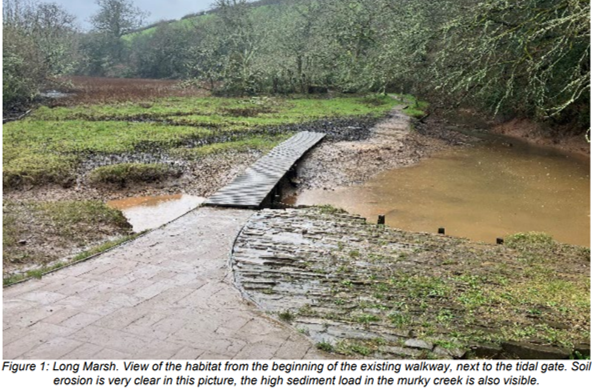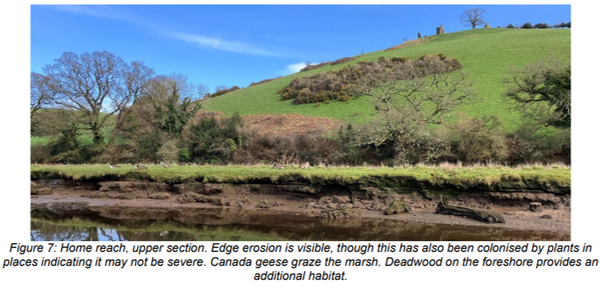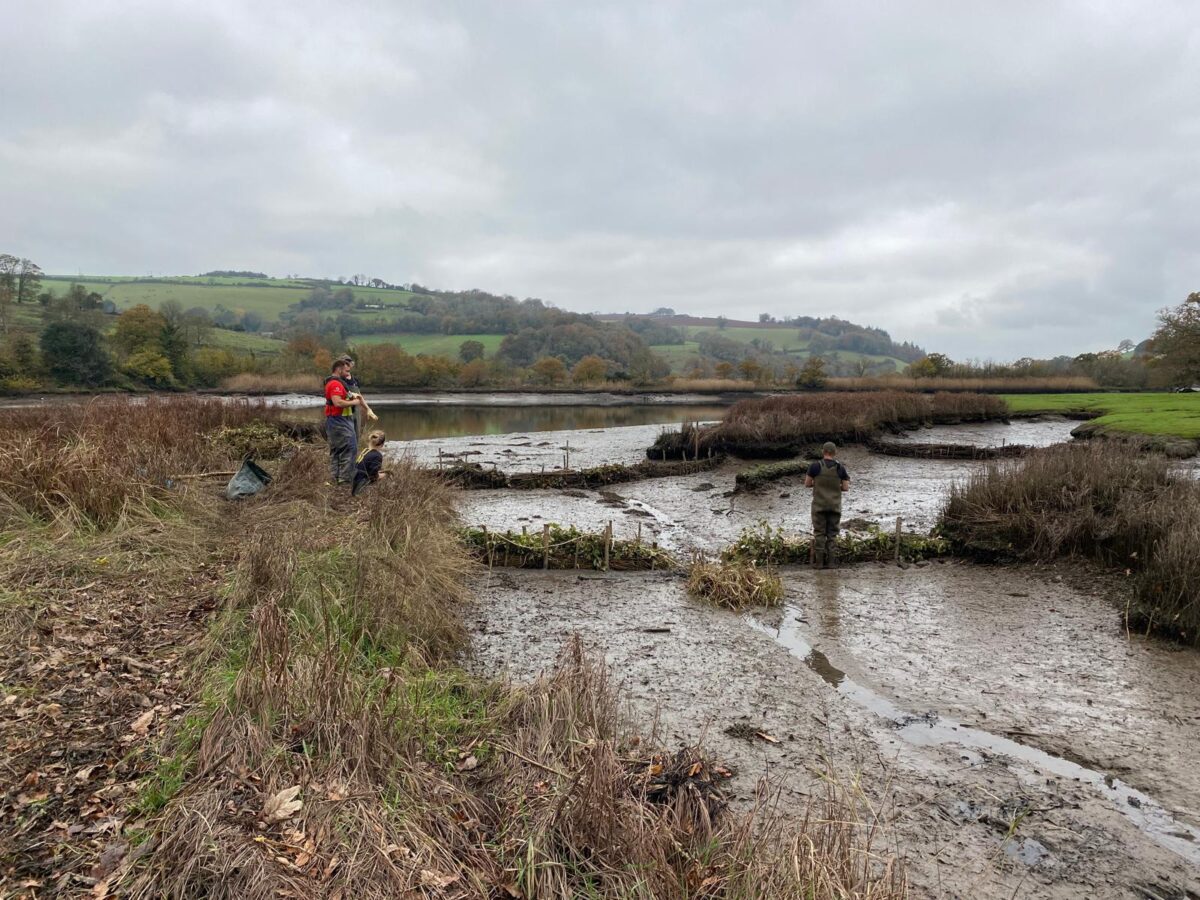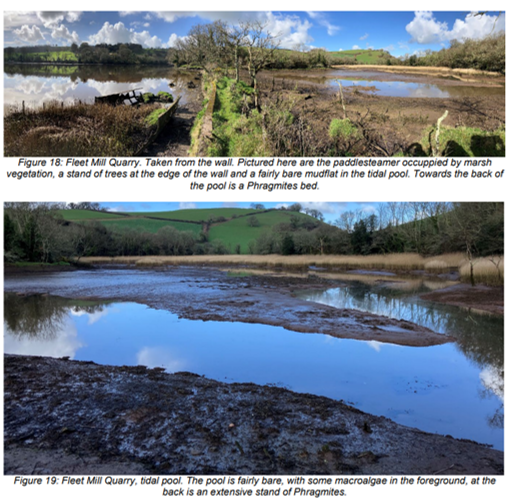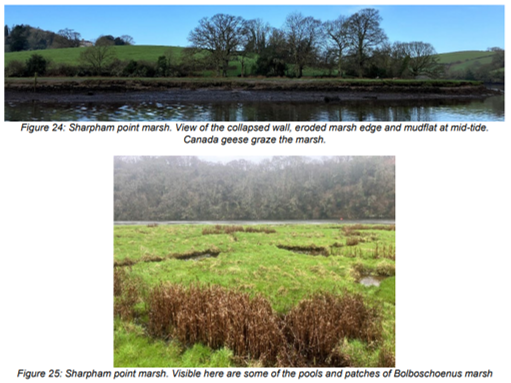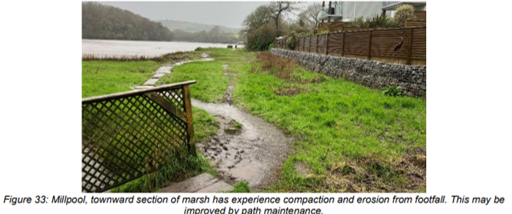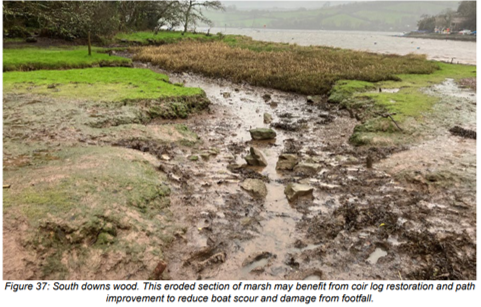Site location: Long Marsh – Totnes East Bank
Description: Long marsh is a small strip of semi-improved grassland and saltmarsh with limited hydrological connectivity to the estuary. The hard defences and raised banks of the 1830s subsequently disconnected the wetland from river, resulting in a transition to a more terrestrial habitat. In the upper reaches of the site, is mixed scrub and semi-improved grassland. Centrally, the area is dominated by sea club rush (Bolboschoenus maritimus) swamp with rare occurrence of softstem bulrush (Scirpus tabernaemontani), hastate goosefoot (Atriplex prostrata) and other saltmarsh species. At the edges of the stream and on decaying wood, there are some species indicative of brackish conditions but the community is mainly creeping bent grass (Agrostis stolonifera) subcommunity mixed with mesotrophic grassland. These communities indicate that there is rare saline inundation. The stream appears to have a high level of suspended sediment, possibly due to the runoff from the catchment during periods of high rainfall. There is considerable path erosion from frequent footfall, maintenance of paths would likely strongly benefit the vegetation and reduce soil erosion.
Work Completed: > On site survey (2024)
> Installation of an accessible boardwalk from the south end of the riverside footpath around the saltmarsh area.
> Opening up of existing sluice to allow more frequent salt water inundation of marsh
> Leaky Dams upstream in stream, to help mitigate flooding and manage sediments
> Provision of improved site information.
Notable Species: Devon Wildlife Trust and Biological Records Centre surveyed the Home Reach & 40ft Off sites, and found 48 different botanical species, including a number that are particularly notable for Devon. These notable species include large quantities of Saltmarsh Rush, Common Saltmarsh-grass and Brookweed, with smaller amounts of Wild Celery, Distant Sedge, English Scurvygrass, Slender Club-rush, Parsley Water-dropwort, Grey Club-rush, Common Cord-grass, Lesser Sea-spurrey and Annual Sea-bite.

